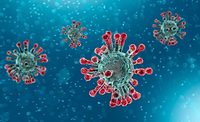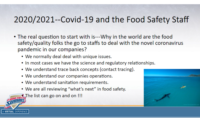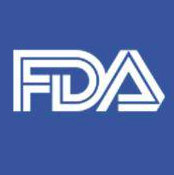COVID-19 & Food Safety: The Importance of Research and Extension in Mitigating the Negative Impacts of COVID-19

There are more than 28 million cases of coronavirus disease (COVID-19) and more than 900,000 people have died worldwide so far. The COVID-19 pandemic has also caused disruptions to every component of the agriculture sector (crops, animals, and fish). The most frightening part is that the virus is still taking lives on a daily basis; the effects of this virus would be much worse if we do not have the presence of the power of science (research), the speed of knowledge (research-based information, including those delivered by the Extension system), and the advanced risk communication that we have today. The modern revolution in molecular biology allowed scientists, across the world, to study (in real-time) this virus. It amazes me how fast scientists around the globe moved and provided us with sufficient information about this novel virus. The modern communication channels/methods, including the internet and social media, allowed us to learn about this invisible enemy at an unprecedented speed. We were able to observe live peer-reviewed articles via open access journals. The faster we know, the greater our ability to develop policy, guidance, treatments, and vaccines faster so millions of lives can be saved.
There are still considerable gaps in our understanding of the relationship between the virus that causes COVID-19 and food. Based on what is known about similar coronaviruses, national [the U.S. Food and Drug Administration, the U.S. Centers for Disease Control and Prevention (CDC), and the U.S. Department of Agriculture, (USDA)] and international [e.g., the World Health Organization (WHO), the Food and Agriculture Organization of the United Nations, and the European Food Safety Authority] regulatory and public health agencies/organizations came to a consensus that there is no evidence that SARS-CoV-2 (the virus that causes COVID-19) can be transmitted through food or food packaging. However, the CDC stated that “It may be possible that a person can get COVID-19 by touching a surface or object that has the virus on it and then touching their mouth, nose, or possibly their eyes, but this is not thought to be the main way the virus spreads. And because of poor survivability of these coronaviruses on surfaces, there is likely a very low risk of spread from food products or packaging.” The WHO stated that “Someone may become infected by touching a contaminated surface (food and food-packaging materials are surfaces), object, or the hand of an infected person and then touching their mouth, nose, or eyes. This can happen, for instance, when touching doorknobs or shaking hands and then touching the face.” In a recently published report by the New Zealand Food Safety Science and Research Centre, coronavirus 229E (not SARS-CoV-2) survived on lettuce for up to 2 days. Also, MERS-CoV was able to survive in unpasteurized milk for up to 72 hours; however, pasteurization killed the virus. Although a significant amount of research has or is being done in relation to COVID-19, little to no research has been done related to COVID-19 and food or food packaging materials.
Research is needed to investigate a) the survivability of SARS-CoV-2 on different foods, including animal-sourced food and fresh produce; b) the survivability of SARS-CoV-2 on different food packaging materials; c) the effect of different food processing technologies/techniques on the survivability of SARS-CoV-2 on foods and/or food packaging materials, d) the transfer rate of SARS-CoV-2 from humans to foods and food packaging, e) the transfer rate of SARS-CoV-2 from foods and food packaging materials to humans, and f) suitable rapid detection methods for SARS-CoV-2 on food and food packaging materials, so science-based evidence can be provided for the development of reliable and effective strategies to mitigate the negative impacts of the COVID-19 pandemic. Organizations including USDA (National Institute of Food and Agriculture) have already released funding to study the above issues, so solutions (technologies, innovations, practices, etc.) can be developed and rapidly adopted by farmers, processors, and consumers. The data generated from these research projects should also be utilized to develop educational materials by the Extension system to educate/train the general public. An integrated approach using research and Extension is the key to stop and/or mitigate the negative impacts of COVID-19.
For more than 100 years, the Extension system has played an important role in the U.S. It has transferred discoveries, technologies, and good practices from academia (research and higher educational institutions) to the food industry and consumers. For example, in 1890, Dr. Stephen Babcock (professor of agricultural chemistry at the University of Wisconsin) significantly transforming the dairy industry by sharing his “butterfat in milk measuring test” (originally conceived by Frederick Garland). The Smith-Lever Act in 1914 strengthened the role of Extension at land-grant universities, where the federal government (USDA) provides funds to each state to conduct Extension programs through non-formal education and learning activities to create positive changes.
Many universities, in the U.S. and around the world, have provided up-to-date technical information on COVID-19 and food safety to their clients/stakeholders, including farmers, ranchers, food processors, and consumers. There are several effective communication methods/channels to convey effective messages or conduct science/research-based Extension activities, including a) in-person training (face-to-face communication), b) virtual (e.g., webinars), c) social networking sites (e.g., LinkedIn and Twitter), d) media (e.g., television), e) printed publications (e.g., magazines, brochures, factsheets, posters, and flyers), f) blogs, g) phone calls, and h) websites. Face-to-face is the most effective method to communicate with the public; however, it is not a practical method, especially in a pandemic, to reach large numbers of people. Therefore, a combination of the above channels can be more successful at reaching different audiences.
Barakat Mahmoud, Ph.D., is an international food safety expert with 30 years of experience in food safety. He conducted food safety programs in many developed and developing countries in North America, Europe, the Middle East, Africa, Asia, Central America, and the Caribbean.
Resources
extranet.who.int/sph/docs/file/4198.
wi101.wisc.edu/2013/12/01/the-men-behind-the-butterfat-test/.
www.unitedfresh.co.nz/assets/COVID-19/United-Fresh---Potential-for-Foodborne-Transmission-of-Covid-19---Literature-Review-Update-19-May-20.pdf.
sciencebusiness.net/covid-19/news/live-blog-rd-response-covid-19-pandemic.
www.food-safety.com/enewsletter/the-covid-19-pandemic-food-safety-an-eyewitness-to-the-global-war-against-the-invisible-enemy/.
www.food-safety.com/enewsletter/modernized-wet-markets-an-approach-to-prevent-future-global-public-health-crises/.
www.food-safety.com/enewsletter/covid-19-and-food-safety-walk-the-talk-on-protecting-global-public-health/.
www.frontiersin.org/research-topics/13377/coronavirus-disease-covid-19-pathophysiology-epidemiology-clinical-management-and-public-health-resp#articles.
pubmed.ncbi.nlm.nih.gov/23681671/.
Looking for a reprint of this article?
From high-res PDFs to custom plaques, order your copy today!








